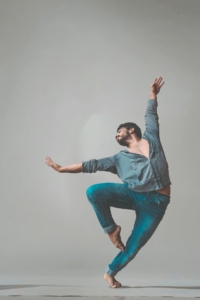The Key to Unlocking Dance Success
As the holiday season approaches, it’s the perfect time to reflect on what truly matters in dance: technique. For young competitive dancers, technique is the foundation that allows them to elevate their performance, stand out in competitions, and decrease the risk of injuries. Teachers and parents can play a pivotal role in helping dancers focus on perfecting their technique through intentional practice, cross-training, and working with dance specialists.
In this blog, we’ll explore why it’s essential to be thankful for technique and how to enhance it through strength, control, balance, proprioception, and specialized support from a dance-specialist PT.
Why Technique Matters in Competitive Dance
Technique is the core of every successful dancer. No matter how much passion and performance quality a dancer has, a lack of strong technique can limit their potential. For adolescent dancers, this is especially true as their bodies are growing, and they are pushing their limits more than ever before. Proper technique helps dancers:
- Minimize injuries, especially as they transition into more advanced moves.
- Gain more control over their movements.
- Build the endurance and strength needed to perform consistently at a high level.
- Master complex choreography without sacrificing precision.
Key Areas of Focus:
1. Strength
Building strength is critical for dancers to execute movements with power and control. From leaps to pirouettes, strong muscles support the joints and reduce the risk of injury. Strength training should be a regular part of every competitive dancer’s routine to develop the muscles needed for demanding choreography. Cross-training, such as Pilates or weight training, can help target muscle groups not always used in dance class.
2. Control
Control comes from a combination of muscular strength and proper technique. Dancers need control to smoothly transition between movements and avoid “throwing” their bodies into steps. Improving core stability, leg strength, and body awareness is essential. Certain approach in strength training can enhance a dancer’s ability to control their movements.
3. Balance
Balance is more than just standing en pointe. Dancers need balance to hold their positions, turn without wobbling, and execute intricate movements with precision. Focusing on ankle stability and core engagement through exercises like balance drills and proprioceptive training is crucial.
4. Proprioception
Proprioception, or body awareness, allows dancers to know where their bodies are in space without looking. This skill is vital for coordination, maintaining form, and staying in sync with other dancers. Exercises that challenge proprioception, such as balancing on unstable surfaces or using resistance bands, can help sharpen a dancer’s body awareness.
5. Mobility & Flexibility
Mobility and flexibility are essential for executing a wide range of movements and maintaining a full range of motion in the joints, all while maintaining control. Incorporating safe stretching routines, dynamic warm-ups, and mobility exercises into training can decrease injuries and improve performance. Layer on a robust strengthening program focused on working throughout a large range of motion to have the icing on the cake.
Cross-Training: The Secret to Better Technique
Cross-training is the unsung hero of competitive dance training. It complements a dancer’s regular classes by targeting areas of weakness and decreasing overuse injuries. Cross-training can include:
- Strength training to build muscular endurance, flexibility and core stability.
- Swimming or cycling for cardiovascular health and low-impact conditioning.
- Resistance training for improving joint stability and muscle control.
Each of these activities enhances a dancer’s overall performance by addressing areas that traditional dance classes may not quite target.
StepUp 360: Your Path to Stronger Technique
For dancers looking to elevate their technique to the next level, our program, StepUp 360, is designed to help dancers achieve optimal strength, control, and balance.
Perfect for dancers of any age, skill level, or genre wanting to improve their performance and confidence, all while looking to decrease injury risk – look no further.
Here’s how it works:
- Submit a video of yourself dancing in competition or performance & answer a few questions.
- Your video gets reviewed by our specialist, Dr. Alyssa.
- Receive feedback & a customized training program to your inbox.
Learn more about our StepUp 360 program here.
Final Thoughts
As we express gratitude this November, let’s not forget to be thankful for technique. By focusing on a well-balanced program, dancers can unlock their full potential and perform at their best. With cross-training and support from a dance specialist PT, young dancers can continue to refine their technique and stay injury-free, ensuring a long and successful dance career.



